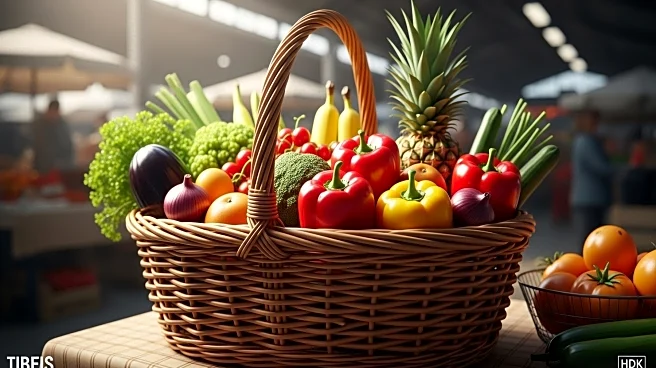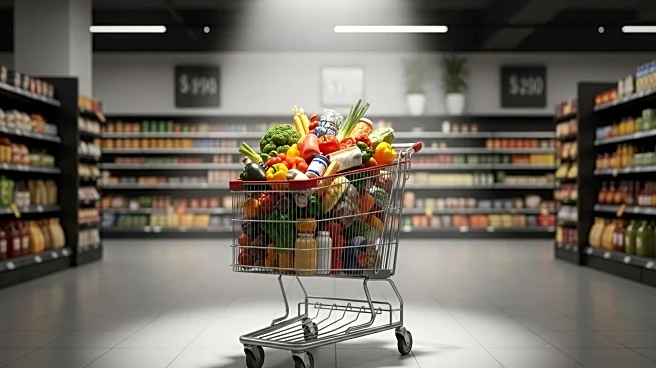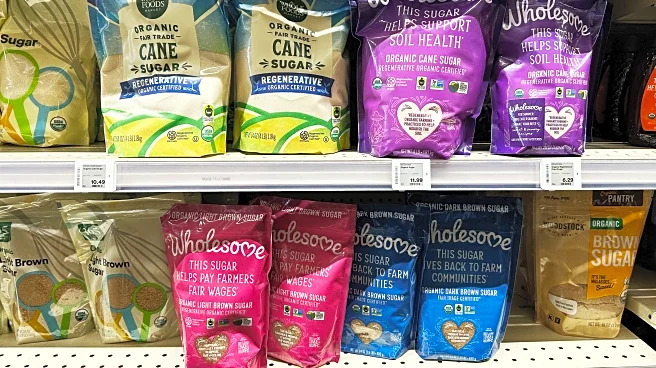What's Happening?
Food prices in the United States have been increasing, with a notable rise of 2.7% in August compared to the previous year, according to the Consumer Price Index (CPI). Phil Lempert, a food industry analyst and editor of SupermarketGuru, attributes this rise to three main factors: tariffs imposed by the Trump administration, climate change, and labor shortages. Lempert points out that tariffs have significantly impacted grocery prices, particularly affecting products like coffee, which has seen a 21.7% price increase over the past year. The U.S. imports a substantial portion of its coffee beans from Brazil, which are subject to a 50% tariff. Additionally, Lempert warns of shrinkflation, where manufacturers reduce product sizes while maintaining prices, leading consumers to pay more for less. This trend has been observed in various consumer products since the pandemic began.
Why It's Important?
The rising grocery prices and shrinkflation have significant implications for American consumers, affecting their purchasing power and altering shopping behaviors. As prices increase, consumers may shift towards less expensive store brands, shop at multiple locations for better deals, and buy in bulk to save money. This economic pressure could lead to changes in consumer habits and preferences, impacting the food industry and retail sectors. Moreover, the tariffs on imported goods like coffee highlight the broader economic impact of trade policies on everyday consumer goods, potentially influencing future policy decisions and trade negotiations.
What's Next?
As grocery prices continue to rise, consumers are likely to adopt more cost-saving strategies, such as using shopping lists, coupons, and frequent shopper cards. The food industry may also see increased demand for store brands and bulk purchasing options. Policymakers might face pressure to address the impact of tariffs and explore solutions to mitigate their effects on consumer prices. Additionally, ongoing labor shortages and climate change challenges could prompt further shifts in food production and distribution strategies.
Beyond the Headlines
The phenomenon of shrinkflation raises ethical questions about transparency in product packaging and pricing. Consumers may feel deceived if product sizes decrease without clear communication from manufacturers. This could lead to increased scrutiny and demand for regulatory measures to ensure fair practices in the food industry. Furthermore, the reliance on imported goods subject to tariffs underscores the need for diversified supply chains and sustainable domestic production to reduce vulnerability to international trade policies.












